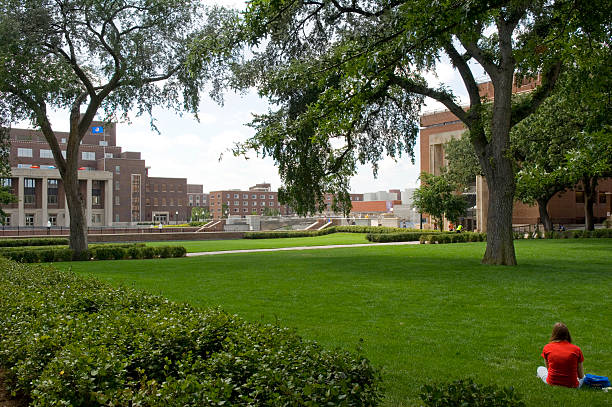Minnesota Politics: A History
University of Minnesota, Minneapolis campus, East Bank.
March 15, 2023
Minnesota has a rich political history dating back to the territorial period in the mid-19th century. Over the years, the state has produced a number of influential political leaders who have shaped the course of the state and the nation. In this article, we will take a look at the history of Minnesota politics, from its early days to the present.
Minnesota became a territory in 1849, and its first territorial governor was Alexander Ramsey, a member of the Whig Party. Ramsey played a key role in shaping the state’s early political landscape and was eventually elected as Minnesota’s first state governor in 1857. During his tenure, Ramsey oversaw the construction of the state capitol building and helped to establish the state’s education system.
In the late 19th century, Minnesota became a hotbed of political activity, with the rise of the Progressive movement. This movement was led by politicians such as Governor John Lind, who worked to pass a number of progressive reforms, including the creation of the Minnesota Public Utilities Commission and the establishment of a direct primary system. Lind’s efforts helped to establish Minnesota as a leader in progressive politics and laid the foundation for the state’s strong tradition of social and political activism.
In the early 20th century, Minnesota politics was dominated by the Farmer-Labor Party, a coalition of farmers and labor unions that emerged in response to the growing power of big business. The party’s most famous member was Eugene V. Debs, a labor leader who ran for president on the party’s ticket in 1920. While the Farmer-Labor Party never achieved the same level of success as the major parties, it played an important role in shaping the state’s political landscape and championed a number of progressive reforms.
During the mid-20th century, Minnesota politics was largely dominated by the Democratic-Farmer-Labor Party (DFL), a merger of the Farmer-Labor Party and the Democratic Party. The DFL’s most famous member was Hubert Humphrey, who served as mayor of Minneapolis, senator from Minnesota, and vice president of the United States. Humphrey was a key figure in the civil rights movement and played a major role in the passage of the Civil Rights Act of 1964.
In the 1970s, Minnesota politics saw the rise of the Independent-Republican Party (IR), a coalition of moderate Republicans and conservative Democrats who were dissatisfied with the DFL’s leftward shift. The IR’s most famous member was Arne Carlson, who served as governor from 1991 to 1999. Carlson was a moderate Republican who championed environmental and social issues and was known for his fiscal conservatism.
In recent years, Minnesota politics has been marked by a growing political polarization, with the state becoming increasingly divided between urban and rural voters. This divide was highlighted in the 2016 presidential election, when the state narrowly voted for Hillary Clinton over Donald Trump.
Today, Minnesota is known for its strong progressive tradition and commitment to social justice. The state has a long history of political activism, with organizations such as the Minnesota Farmers Union, the Sierra Club, and the NAACP playing key roles in shaping the state’s political landscape. Minnesota is also home to a number of influential politicians, including Senator Amy Klobuchar, who has gained national recognition for her work on issues such as health care and consumer protection.
In conclusion, the history of Minnesota politics is a story of progress and change, of activism and social justice. From its early days as a territory to its current status as a leader in progressive politics, Minnesota has played a key role in shaping the course of the nation. While the state has faced its share of challenges and divisions over the years, its commitment to social and political activism remains strong, and it will continue to be a key player in the national political landscape in the years to come. The state’s history of political and social activism has laid the groundwork for future generations to continue the fight for social justice and equality.












